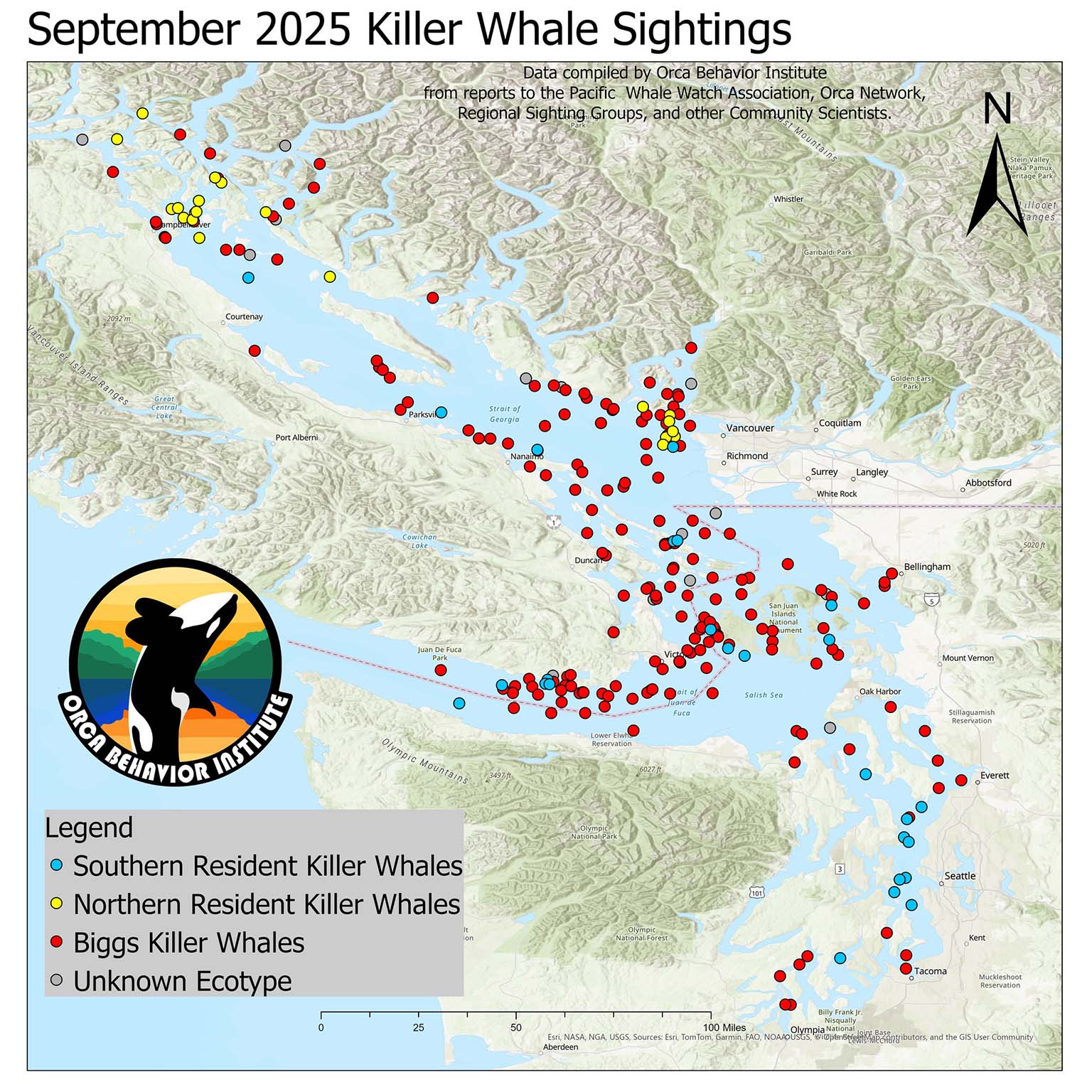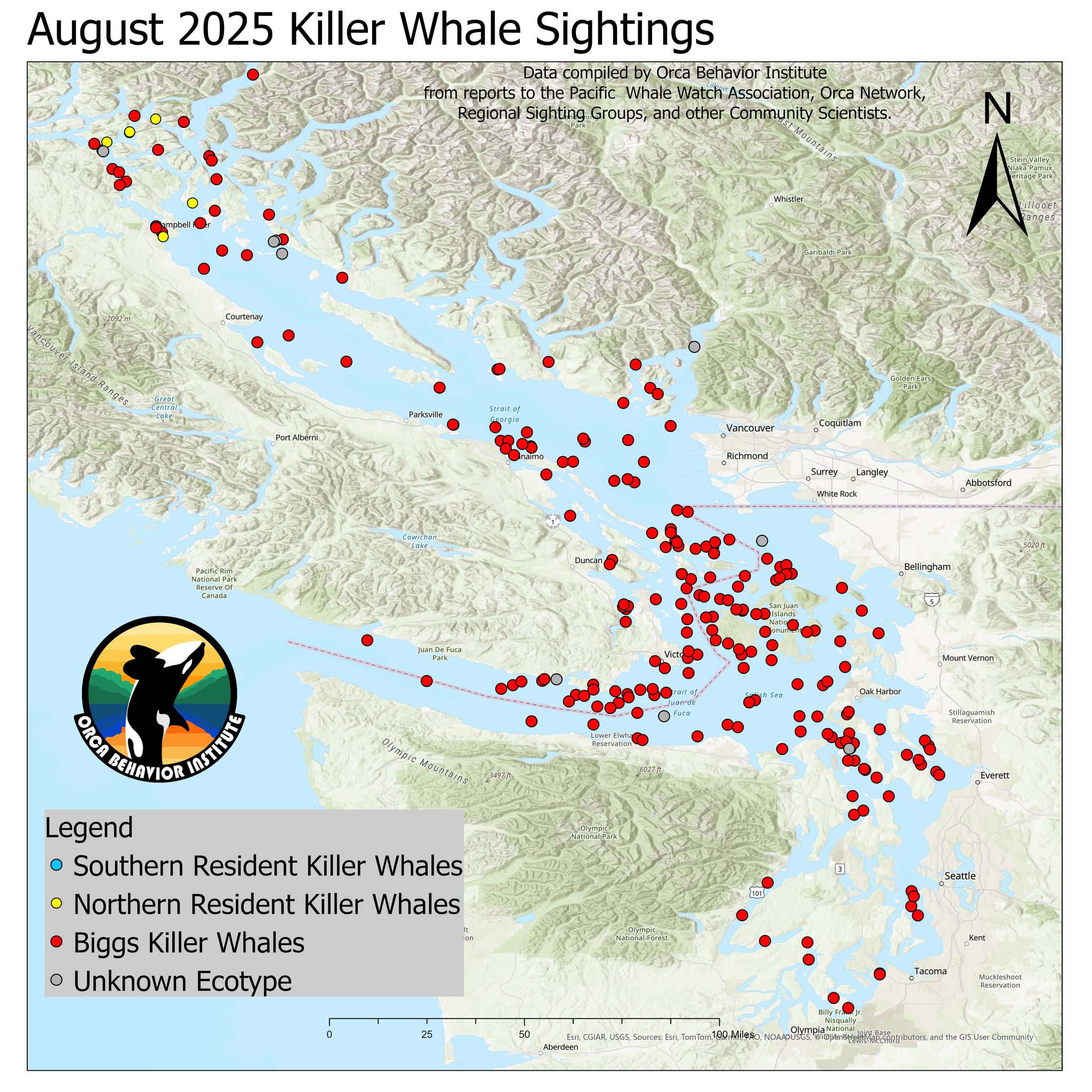June 2024
June was a phenomenal month for both ecotypes of killer whales in the Salish Sea! In a spring that has continued to feel a bit like "the good ol' days", J-Pod spent the entire month in inland waters and all of Ks and Ls paid at least one visit, with the L54 sub-group spending a full two weeks here. We were able to confirm Southern Resident presence on 23 days of the month, the highest total since 2015. (Note that some days they were split into multiple groups, hence a higher number of sightings - 26 - than days present.)
And the Bigg's are continuing to do what they've been doing for years now: booming. For the 7th time in the last 8 years they were confirmed present on all 30 days of the month, demonstrating how "whale days" is no longer a useful metric to monitor their continued increase. We define sightings as a unique group of whales seen on a unique day, and you can see in the graph below that in 2024 we had 49 more Bigg's sightings in June than in 2023. We're also nearly 250 sightings up year-to-date from 2023, setting us up for another record Bigg's year when all is said and done.
It took a Herculean team effort to keep track of it all, as some days in June saw a whopping 14 different groups of Bigg's killer whales spread from north to south throughout the Salish Sea. Some highlights of the month included the return of the the extended T34s, T37s, and T37As; a visit from the T35As; and a T-Party totaling at least 38 individual whales! There were also some new splits and dispersals to throw an additional wrench in things, including the T36A1s spending some time away from the rest of the T36As and T37A3 splitting off from his mom with his older sister (instead of younger sister as he did last year).
As the numbers continue to rise and the social dynamics increase in complexity, it's worth a word again about how this type of whale tracking is possible. If you've spent much any in the whale sightings world you know that we are plagued by gatekeeping as well as a belief that not sharing real-time sightings information is a way to protect the whales. We at OBI believe the opposite: sharing information, including real-time sightings, is the best way to spread appreciation and awareness of the whales and the the issues they face, increase our understanding of their changing habits, and ensure they receive the protections they deserve.
We have nothing but gratitude to all the people that contribute to regional sightings networks, making this type of monthly map possible, including the following groups who make significant contributions each month:
Pacific Whale Watch Association
Whale Sightings in the San Juan Islands
Sunshine Coast Whale and Dolphin Sightings
Howe Sound/Átl'ka7tsem Cetacean Sightings Group
Whale Spotters of Otter Point & Sooke
Gabriola Island Whale Sightings
Olympic Peninsula Whale Sightings






